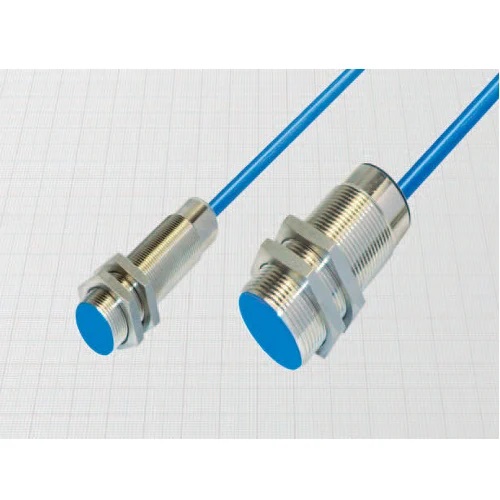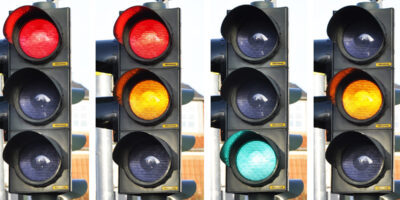The global Capacitive Sensors market size was valued from at USD 29,056.76 million in 2023 to USD 60,615.07 million in 2033, and is expected to expand at a CAGR of 7.63% during the 2024-2033.
Overview: Capacitive sensors are electronic devices that detect and measure electrical capacitance. They are widely used in various applications such as touchscreens, automotive systems, consumer electronics, healthcare, and industrial automation.
- Diverse Applications: Capacitive sensors are applied across a wide range of industries, including automotive, consumer electronics, healthcare, and industrial automation, showcasing their versatility and adaptability.
- Non-Contact Sensing: One of the key features of capacitive sensors is their ability to detect and measure without physical contact, reducing wear and tear and providing a reliable solution for various applications.
- High Precision: Capacitive sensors offer high precision and accuracy, making them suitable for applications requiring fine control and sensitivity, such as in medical devices and laboratory equipment.
- Rising Demand for Smart Devices: The increasing popularity of smart devices, including smart home appliances and wearables, has fueled the demand for capacitive sensors embedded in these products.
- Environmental Resistance: Capacitive sensors are less susceptible to environmental factors like dust and moisture, making them durable and suitable for use in challenging conditions.
- Cost-Effective Manufacturing: Advances in manufacturing processes have made capacitive sensors more cost-effective, contributing to their widespread adoption in various industries.
Market Analysis:
- Market Segmentation: The capacitive sensors market is segmented based on type (touch sensors, proximity sensors), industry verticals, and geography, providing a comprehensive understanding of the market landscape.
- Globalization: The global nature of the capacitive sensors market is evident with key players operating on a global scale, leading to increased competition and innovation.
- Regulatory Landscape: Stringent regulations and standards in industries like healthcare and automotive influence the development and adoption of capacitive sensors, shaping the market dynamics.
- Emerging Markets: Capacitive sensor adoption is on the rise in emerging markets, driven by increased industrialization, urbanization, and a growing middle-class population.
- Collaborations and Partnerships: Companies are forming strategic collaborations and partnerships to enhance their product portfolios and expand their market presence in the capacitive sensors industry.
- Customization Trends: The demand for customized capacitive sensors tailored to specific applications is growing, reflecting the need for specialized solutions in various industries.
Dynamics:
- Rapid Technological Advancements: The capacitive sensors market is dynamic, with continuous technological advancements leading to the development of sensors with enhanced features and functionalities.
- Market Consolidation: Mergers and acquisitions among key players in the industry contribute to market consolidation, influencing competition and market dynamics.
- Sustainability Initiatives: Growing emphasis on sustainability has led to the development of eco-friendly capacitive sensors and increased focus on energy-efficient technologies.
- Integration with AI and Machine Learning: Capacitive sensors are increasingly integrated with AI and machine learning algorithms, enabling advanced functionalities such as gesture recognition and predictive maintenance.
- Wireless Connectivity: The integration of capacitive sensors with wireless communication technologies, such as Bluetooth and Wi-Fi, facilitates seamless connectivity in various applications.
- Impact of COVID-19: The COVID-19 pandemic has influenced the capacitive sensors market, with disruptions in the supply chain and changes in consumer behavior affecting the overall industry dynamics.
Trends:
- Haptic Feedback Integration: Capacitive sensors are now commonly integrated with haptic feedback technology, providing users with tactile sensations, enhancing user experience in touch-based applications.
- Flexible and Transparent Sensors: The trend towards flexible and transparent capacitive sensors is gaining traction, enabling innovative designs in electronics and wearables.
- Smart Cities Initiatives: Capacitive sensors play a role in smart city initiatives, contributing to intelligent transportation systems, waste management, and public infrastructure.
- Augmented Reality (AR) and Virtual Reality (VR): The integration of capacitive sensors in AR and VR devices enhances user interaction and immersion, driving trends in the entertainment and gaming industries.
- Energy Harvesting: Capacitive sensors are increasingly integrated with energy harvesting technologies, allowing for self-powered or low-power sensor solutions in remote or challenging environments.
- Robotic Process Automation (RPA): Capacitive sensors are utilized in robotics for automation processes, contributing to the trend of Industry 4.0 and smart manufacturing.
Receive the FREE Sample Report of Capacitive Sensors Market Research Insights @ https://stringentdatalytics.com/sample-request/capacitive-sensors-market/12363/
Market Segmentations:
Global Capacitive Sensors Market: By Company
• Synaptics
• Microchip Technology
• Cypress Semiconductor
• STMicroelectronics
• NXP Semiconductors
• Texas Instruments
• Renesas Electronics
• Infineon Technologies
• Analog Devices
• Cirque
Global Capacitive Sensors Market: By Type
• Touch Sensors
• Motion Sensors
• Position Sensors
• Others
Global Capacitive Sensors Market: By Application
• Consumer Electronics
• Food & Beverages
• Oil & Gas
• Healthcare
• Automotive
• Defense
• Industrial Manufacturing
• Others
Regional Analysis of Global Capacitive Sensors Market
All the regional segmentation has been studied based on recent and future trends, and the market is forecasted throughout the prediction period. The countries covered in the regional analysis of the Global Capacitive Sensors market report are U.S., Canada, and Mexico in North America, Germany, France, U.K., Russia, Italy, Spain, Turkey, Netherlands, Switzerland, Belgium, and Rest of Europe in Europe, Singapore, Malaysia, Australia, Thailand, Indonesia, Philippines, China, Japan, India, South Korea, Rest of Asia-Pacific (APAC) in the Asia-Pacific (APAC), Saudi Arabia, U.A.E, South Africa, Egypt, Israel, Rest of Middle East and Africa (MEA) as a part of Middle East and Africa (MEA), and Argentina, Brazil, and Rest of South America as part of South America.
Click to Purchase Capacitive Sensors Market Research Report @ https://stringentdatalytics.com/purchase/capacitive-sensors-market/12363/
Reasons to Purchase a Report:
- Market Forecasting: A comprehensive report provides accurate market forecasting, helping businesses make informed decisions based on future trends and potential growth areas.
- Risk Mitigation: Understanding market risks, challenges, and opportunities assists businesses in developing risk mitigation strategies and adapting to changing market conditions.
- Competitor Analysis: In-depth competitor analysis aids businesses in identifying key players, benchmarking their performance, and formulating competitive strategies.
- Investment Opportunities: The report can highlight potential investment opportunities in emerging markets or technological advancements, guiding investors and stakeholders.
- Policy and Regulatory Insights: Reports provide insights into regulatory frameworks and policies, allowing businesses to align their strategies with industry standards and compliance requirements.
- Customer Behavior Analysis: Understanding customer behavior and preferences through market reports helps companies tailor their products and services to meet evolving consumer demands.
Key Highlights:
- Innovations in Gesture Recognition: Capacitive sensors are increasingly being used for advanced gesture recognition technologies, enabling intuitive and touchless interactions in various applications.
- Biometric Integration: The integration of capacitive sensors with biometric technologies, such as fingerprint and palm recognition, enhances security features in devices and access control systems.
- Smart Home Integration: Capacitive sensors play a crucial role in smart home applications, controlling lighting, temperature, and other functions through touch interfaces.
- Automotive Interior Innovations: Capacitive sensors contribute to the development of futuristic automotive interiors with touch-sensitive controls, ambient lighting, and interactive displays.
- Wearable Technology: The miniaturization of capacitive sensors has facilitated their integration into wearable devices, contributing to the growth of the wearable technology market.
- Human-Machine Interface (HMI) Evolution: Capacitive sensors are pivotal in the evolution of HMI, providing responsive and interactive interfaces for machinery and industrial control systems.
Historical Developments:
-
- Introduction of Projected Capacitive Touchscreens: The introduction of projected capacitive touchscreens revolutionized the consumer electronics market, providing a more responsive and durable alternative to resistive touchscreens.
- Transition from Resistive to Capacitive Technology: The shift from resistive to capacitive touchscreen technology marked a significant milestone, leading to improved user experiences and enhanced device durability.
- Early Adoption in Consumer Electronics: Capacitive sensors gained early prominence in consumer electronics, particularly with the widespread adoption of smartphones and tablets.
- Advancements in Materials: Historical developments include advancements in the materials used in capacitive sensors, leading to improved sensitivity, durability, and cost-effectiveness.
- Standardization Efforts: The establishment of industry standards for capacitive sensors has facilitated interoperability and compatibility across different devices and applications.
- Rise of Edge Computing: Historical developments coincide with the rise of edge computing, influencing the integration of capacitive sensors in edge devices for faster processing and reduced latency.
About Stringent Datalytics
Stringent Datalytics offers both custom and syndicated market research reports. Custom market research reports are tailored to a specific client’s needs and requirements. These reports provide unique insights into a particular industry or market segment and can help businesses make informed decisions about their strategies and operations.
Syndicated market research reports, on the other hand, are pre-existing reports that are available for purchase by multiple clients. These reports are often produced on a regular basis, such as annually or quarterly, and cover a broad range of industries and market segments. Syndicated reports provide clients with insights into industry trends, market sizes, and competitive landscapes. By offering both custom and syndicated reports, Stringent Datalytics can provide clients with a range of market research solutions that can be customized to their specific needs.
Reach US
Stringent Datalytics
+1 346 666 6655
Social Channels:




Leave a Reply